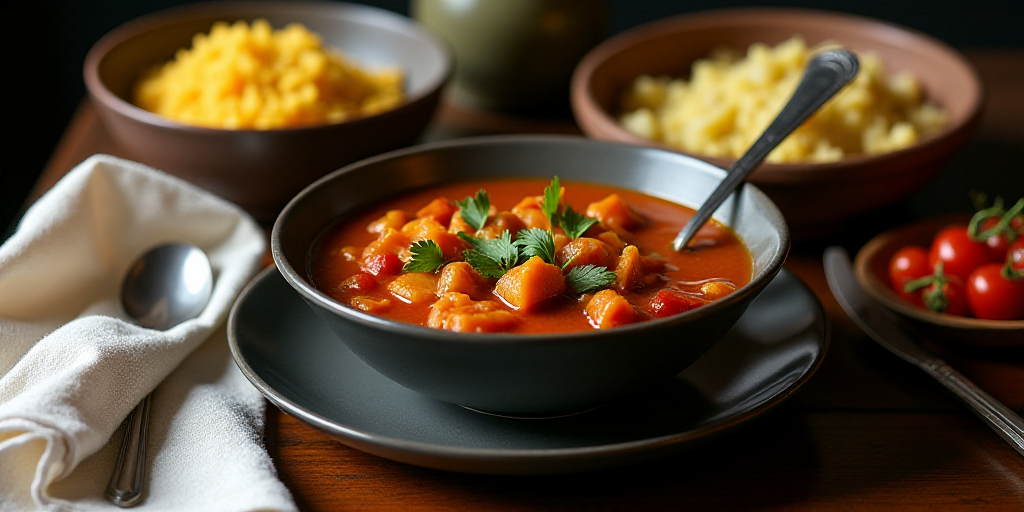“Barriga llena, corazón contento”
This saying echoes in the Spanish proverbial collection of the Golden Age, but in Mexico it acquired its own meaning. The deepest historical reference takes us to the Nahuatl cosmovision. Friar Bernardino de Sahagún, in his Historia general de las cosas de la Nueva España, documented how the Mexicas believed that spiritual entities resided in different parts of the body. One of the most important was the tonalli (associated with heat, destiny, and soul), which resided in the head. However, the ihíyotl (linked to vitality, passions, and life force) resided in the liver. A satisfied stomach ensured a healthy liver, and thus, a calm and energetic spirit. The saying is the fusion of these concepts.
“A darle, que es mole de olla”
This saying smells of the community celebrations of the 19th and early 20th centuries. Unlike ceremonial moles of paste, which implied days of preparation and were reserved for weddings or large-scale patronal festivals, the mole de olla was the dish of the most spontaneous and popular celebrations. Historically, it was the stew of post-work feasts. Its mention evokes that festive urgency of rural life after the revolution: an opportunity to eat well, in abundance, and in community.
“Le pusieron el dedo en la llaga”
The historical reference here takes us to the pulque economy, which flourished in the Apan plains between the 18th and 19th centuries. Large pulque haciendas perfected the art of extracting aguamiel. The tlachiquero, the specialized worker, used a coconut to suck the liquid from a cavity or “wound” carved into the maguey heart. Incorrectly placing a finger or any instrument in this wound could damage the plant irreversibly or contaminate the aguamiel. The saying, therefore, originates from the jargon of a precise and crucial craft for the era’s economy, describing an act requiring accuracy to not ruin a delicate process.
“Las penas con pan son menos”
This phrase is a “linguistic fossil of the Viceroyalty.” With the imposition of wheat, bread became a central food in the cities of New Spain, though the tortilla never lost its throne. By the 17th century, panaderías like “Bizcochos de San Francisco” in Mexico City were institutions. Sweet bread became an accessible consolation for the urban population. Chroniclers of the time, like Artemio de Valle Arizpe, described bread as a commonplace item marking the rhythm of life. The saying reflects this colonial reality: when faced with hardship, access to a caloric, sweet, and relatively affordable food like piloncillo bread was an immediate and tangible relief.
“Echarle mucha crema a sus tacos”
This saying is relatively modern, probably from the mid-20th century, and its origin is purely urban. It emerged with the explosion of taquerías in Mexico City. In the 1950s, the taco solidified as the emblem of street food. Although crema is a European dairy derivative, it became popular as an affordable garnish during this period. Initially, its use was moderate, but in lower-quality taquerias, excessive crema could mask the scarcity or poor flavor of meat. The diner learned to distrust overly “creamy” tacos, making the expression synonymous with someone who adorns or exaggerates to conceal a shortage.
“Salió más caro el caldo que las albóndigas”
This expression, also present in Spain, resonates particularly in Mexico’s post-revolutionary and mid-20th century domestic economy. In times of limited resources, waste-not cooking was the rule. Meatballs made from ground meat were a way to stretch expensive protein. However, the “broth” accompanying them wasn’t just water; a good tomato broth required fresh produce, onions, garlic, and sometimes a bone for flavor. These ingredients’ cost, during inflation, could rival or exceed that of the meat itself. The saying echoes the accounts kept by household heads.
Key Takeaways
- “Barriga llena, corazón contento” reflects Nahuatl beliefs about the body’s energy centers.
- “A darle, que es mole de olla” speaks to the communal spirit of post-revolutionary Mexico.
- “Le pusieron el dedo en la llaga” originates from the precise craft of pulque extraction.
- “Las penas con pan son menos” highlights the importance of affordable, caloric food in colonial Mexico.
- “Echarle mucha crema a sus tacos” emerged from the rise of taquerías and the use of crema as a garnish.
- “Salió más caro el caldo que las albóndigas” mirrors the economic realities of post-revolutionary Mexico.






